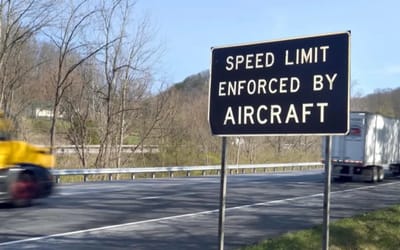Inside secret facility in Southern California where a revolutionary carbon fiber aircraft is being built
Published on Nov 21, 2025 at 12:26 PM (UTC+4)
by Molly Davidson
Last updated on Nov 21, 2025 at 6:17 PM (UTC+4)
Edited by
Molly Davidson
A secret facility called the Mojave Air and Space Port in Southern California is building a carbon fiber aircraft called Stratolaunch that’s unlike anything the aviation world has seen.
From the outside, it looks like another desert hangar. But step inside, and engineers are shaping a machine on a scale that feels unreal until you’re standing under it.
It’s wider than anything that has ever flown, lifts off with its own lightweight design, and hauls payloads that rockets usually carry.
And after years of work inside Mojave, the massive craft in this hidden hangar is finally getting ready to move.
DISCOVER SBX CARS – The global premium auction platform powered by Supercar Blondie
The carbon fiber aircraft being built inside the Mojave facility
This is where Stratolaunch lives – the twin-fuselage giant built to lift rockets and experimental aircraft to over 29,500 feet before releasing them into the upper atmosphere.
Inside mission control, engineers monitor winds, temperatures, and telemetry streaming from every system across the aircraft’s 380-foot wingspan.
It’s the room that decides whether Stratolaunch rolls or stays parked.
Beyond mission control are the composite bays where the aircraft’s structure is born.

The team built it almost entirely from carbon fiber, and workers complete a surprising amount of that construction by hand.
Technicians stack the sheets at specific angles, vacuum-seal them, and bake them until they cure into panels stiff enough to handle forces the team compares to balancing an elephant on a ruler a mile away.
To survive that, Roc’s wing hides four continuous spars.
16,000lb beams running from tip to tip without breaking inside the fuselages.
Every hydraulic line, cable, and control run snakes through tight internal bays where technicians crawl for hours, configuring the systems that let pilots steer something this oversized.
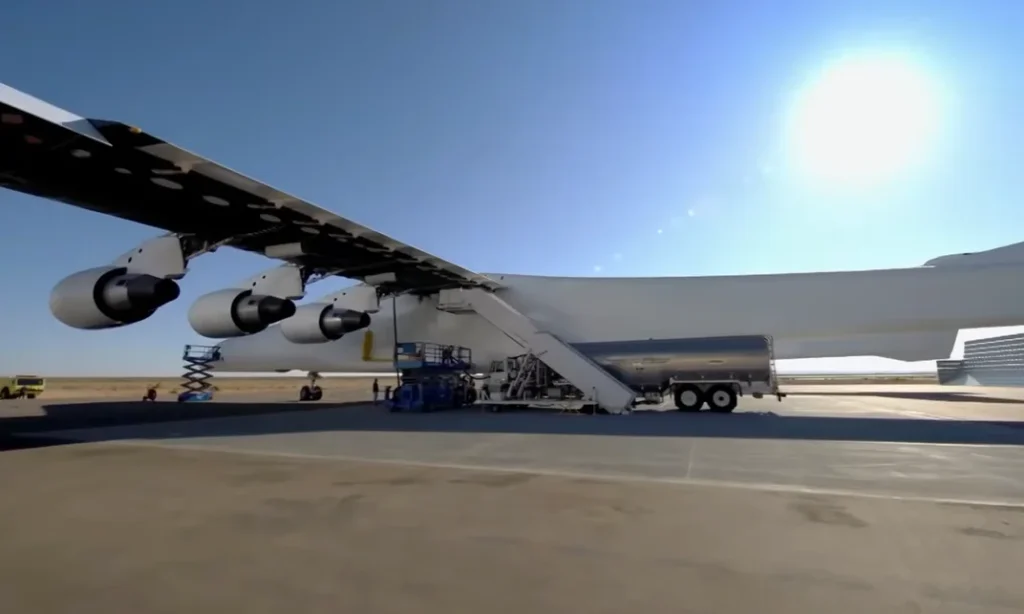
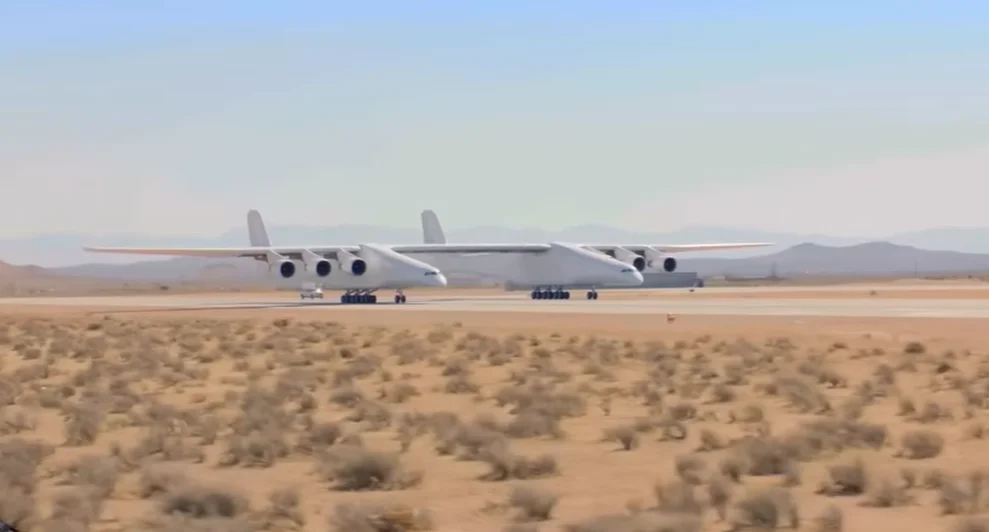
While the structure takes shape, crews outside mount six engines.
Each produces about 56,000lb of thrust and runs Stratolaunch through taxi tests on the desert runway.
In this building, every system and every pound of weight matters.
How carbon fiber turned this massive aircraft from impossible to flyable
Without carbon fiber, Stratolaunch would stay glued to the ground.
The material keeps its empty weight around 227 tons – shockingly low for something this wide.
It’s strong, fatigue-resistant, and strong enough to absorb the huge structural loads that build up across the wing at altitude.
Even Roc’s giant control surfaces, too heavy for human strength alone, rely on hydraulics anchored to composite assemblies that won’t buckle under pressure.
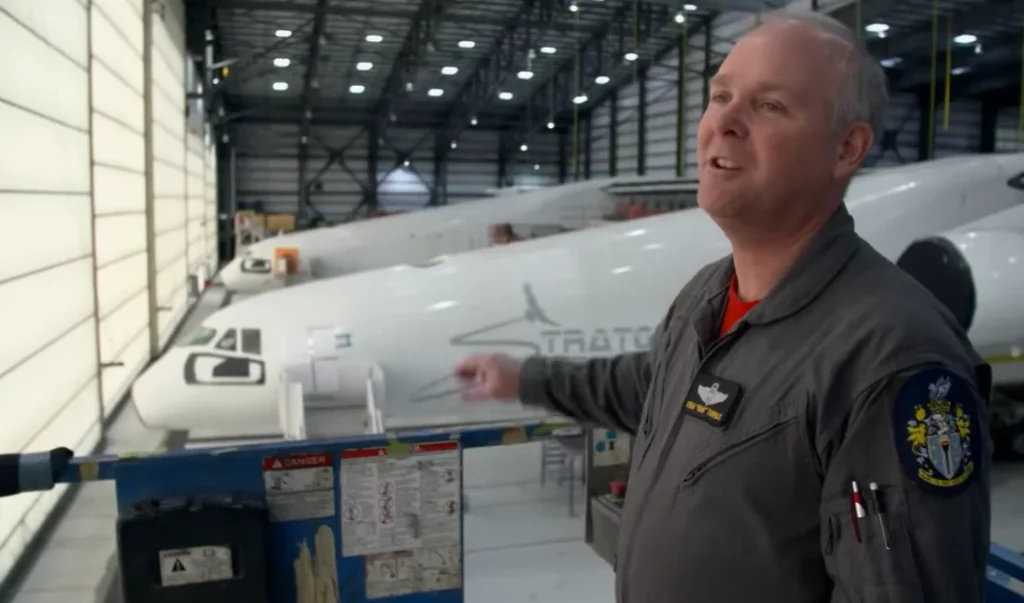
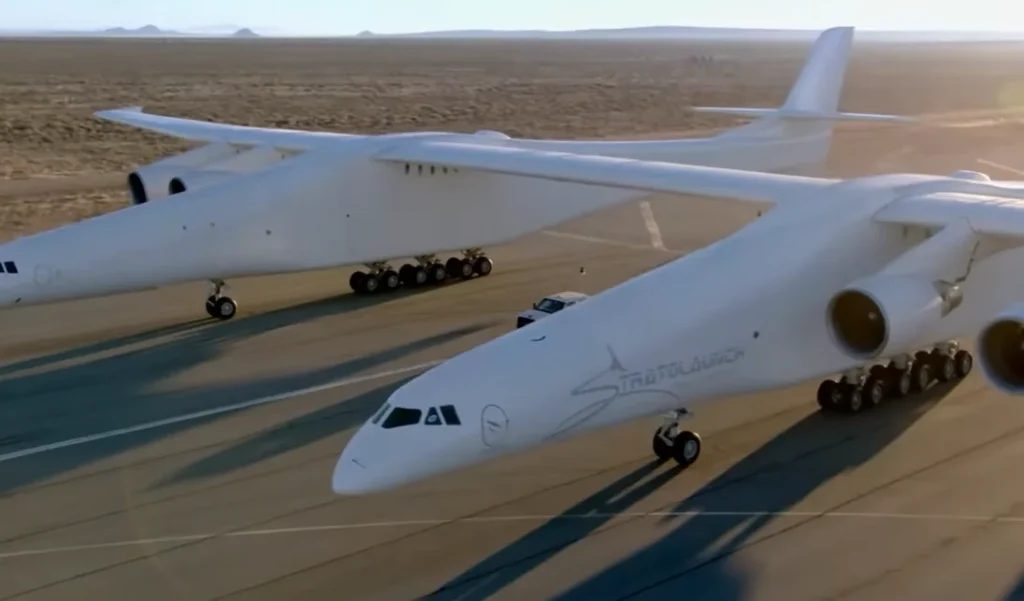
Old-school mechanical signaling meets modern materials, creating the only wing of this size that can actually respond to a pilot.
Inside this desert hangar, they’ve turned carbon fiber and ambition into a flyable machine.
And the moment Stratolaunch lifts off the Mojave runway, everything built inside that secret facility becomes aviation history.
DISCOVER SBX CARS: The global premium car auction platform powered by Supercar Blondie
Molly Davidson is a Junior Content Writer at Supercar Blondie. Based in Melbourne, she holds a double Bachelor’s degree in Arts/Law from Swinburne University and a Master’s of Writing and Publishing from RMIT. Molly has contributed to a range of magazines and journals, developing a strong interest in lifestyle and car news content. When she’s not writing, she’s spending quality time with her rescue English staffy, Boof.




